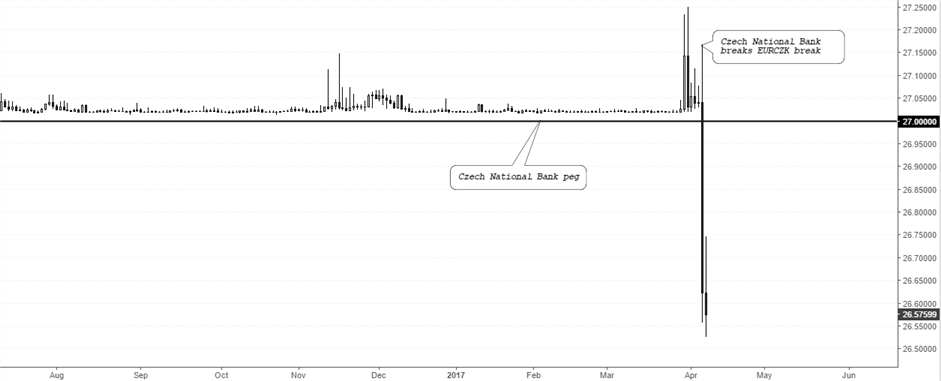
Last week, the Czech central bank announced that it was dropping the peg for the Czech koruna and the euro.
The announcement of the de-peg signaled the fact that the threat of deflation, which was engulfed the eurozone for the past few years was a thing of the past and that the region is now likely to look ahead to a normalization in monetary policy.

EUR/CZK peg abandoned
Czech central bank abandons 4-year peg
The Czech national bank introduced a target rate of 27 koruna to the euro back in November 2013. The measures were adopted at a time when recovery was weak and the threat of deflation was real. The EUR/CZK peg was introduced to boost inflation and to ensure that the local currency did not strengthen against the euro.
The effects of the monetary policy via the peg were put in place to ensure that imports of goods and services were lower.
It was also designed to ensure that the fixed exchange rate would support the economy activity by making sure that Czech produced goods and services were more competitive in the global markets.
The Czech national bank introduced the peg at a time when deflation risks were the strongest as the eurozone economy continued to worsen coming out from the sovereign debt and the banking crisis. The eurozone economy was seen to be the biggest trading partner for the Czech Republic.
Markets a bit surprised but volatility contained
The timing of the Czech national bank to announce the currency de-peg was well managed. But the central bank announced at the March 30 monetary policy meeting that the “end date” for the EUR/CZK peg was fast approaching.
The only surprise was that the central bank did not give any specific date for the EUR/CZK de-peg. Market participants were expecting that the central bank would announce the EUR/CZK de-peg during one of its upcoming monetary policy meetings, with some expecting this to occur on May 4th when the central bank was scheduled to meet next.









Leave A Comment